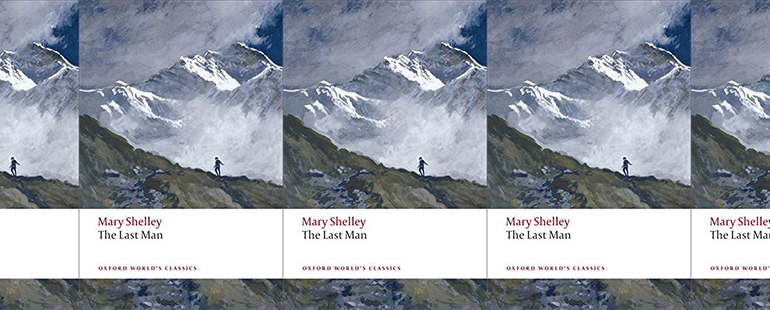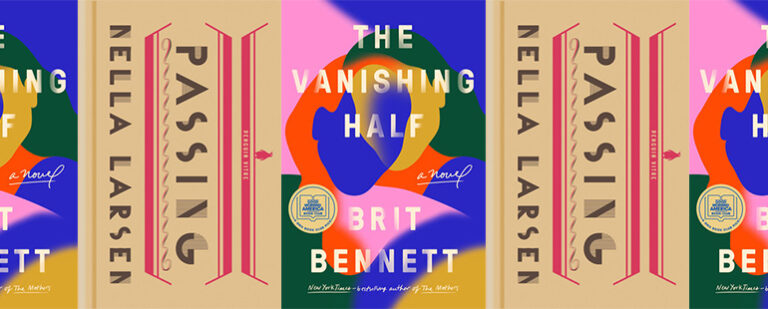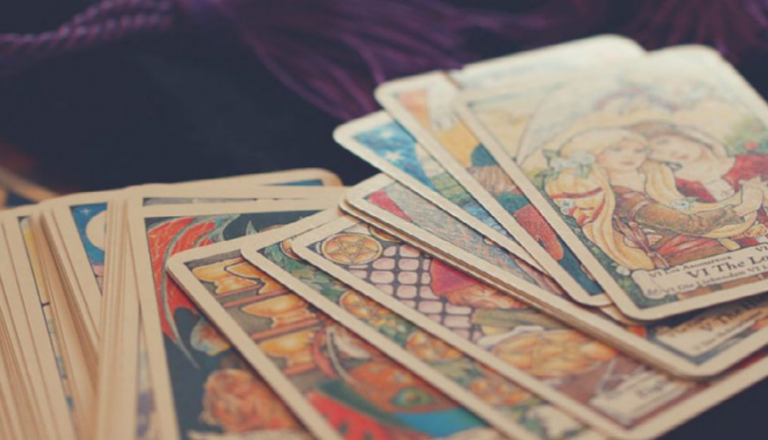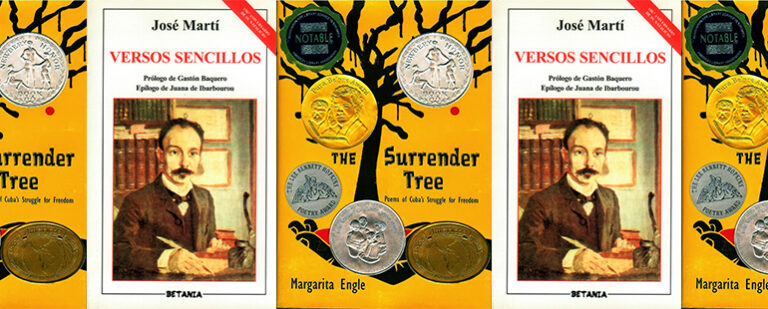Mary Wollstonecraft Shelley’s Prescient Apocalyptic Novel

In the 1820s, Mary Wollstonecraft Shelley found herself widowed and virtually alone after the deaths of her husband, Percy Bysshe Shelley; three of her children; her niece; her half-sister; and her close friend, Lord Byron. Deeply depressed and living in a Europe ravaged by war, famine, and cholera, Shelley was inspired to write The Last Man, published in 1826, about a devastating plague that brings about the end of humanity. The result is an eerily prescient novel that manages somehow to be both bleak and hopeful.
Set in the late twenty-first century, and based on prophecies that Shelley claims to have discovered in a cave, The Last Man is the story of five friends who attempt to survive a devastating plague sweeping the globe. But as the title implies, each succumbs to the indiscriminate disease until only the narrator, Lionel Verney, is left alive. With a sweeping narrative that begins well before the plague’s advent and touches on governance, colonialism, environmental degradation, class rigidity, and the rights of the individual versus the collective, Shelley’s book captures the existential horror of watching destruction creep slowly to your doorstep, as well as the myriad forms that destruction will take.
The Last Man is often called the first work of dystopian fiction, but Shelley was not the first writer to speculate about the end of men. As noted by Olivia Murphy of the University of Sydney, Shelley had several contemporaries who published work imagining the end of the world, an outcome that seemed possible given the social and political tumult of the time. Revolutions in the United States and France, the Napoleonic Wars, and the eruption of Mount Tambora and the resulting environmental effects did not exactly inspire faith in the future among many writers and artists. The Last Man, in fact, arrived at a period when readers had tired of narratives detailing the extinction of the human race: the book was savaged by critics and failed to find an audience. It was not reprinted until 1965, when the world was again confronted with social upheaval and dire environmental warnings, and the public appetite for apocalyptic contemplation was stirred anew. Reading The Last Man in 2021—in the second year of a global pandemic, late in a summer marked by multiple unprecedented environmental catastrophes, amid a political climate that grows every day more partisan and volatile—was an exercise in endurance, and gave me that eerie feeling I sometimes get when I read an old book and am confronted with the biblical truth that there truly is no new thing under the sun.
The novel is narrated by Lionel, the disgraced son of a former aide to the last King of England. Though disposed to crime and belligerence as a child, Lionel befriends the kind and judicious Adrian, son of the former King; through the relationship Lionel is exposed to the great thinkers of antiquity and improves his mind and heart under the wise counsel of his friend. Lionel marries Adrian’s sister Idris, and Lionel’s sister, Perdita, marries Lord Raymond, an ambitious noble. In the early chapters of the novel, the story is concerned with the romantic intrigues between the characters, as well as a brewing conflict between Adrian, who, though the heir to the throne, campaigns for England to become a republic, and Lord Raymond, who wishes to restore the monarchy and become the next King of England. This conflict, however, is resolved peacefully when Lord Raymond settles for being named Lord Protector of his country, and it seems the five friends and their nation may now enjoy a well-earned peace.
(I will pause to reiterate that this novel is set at the end of the twenty-first century—the story begins in 2073 and ends in 2100—despite the fact that the world of Shelley’s imagining reads exactly like that of the 1820s, and the Europe she describes is preoccupied with the same problems in her fictional future as it was in her day. This debate of monarchy versus republic is wholly in keeping with the rest of the novel, which quaintly imagines that the British people of two hundred fifty years hence will still travel by carriage and fight with swords and light dark rooms with candles.)
Shortly after being named protector, Lord Raymond finds himself enmeshed with a Greek princess, Evadne, who has fallen into poverty. While Raymond believes his intentions with Evadne are pure, his wife, Perdita, falls into an all-consuming despair when she discovers the relationship. Unable to fix this rift, Raymond renounces his title and goes off to Greece to help the Greeks in their ongoing battle with Turkey. Much intrigue ensues, and this episode, while full of drama, serves mainly to kill off Raymond and Perdita, and lay the setting for the new plague, seen in these early days as a problem only for the people living in Asia and the Middle East.
But the plague travels on, irrespective of national borders. Soon it’s in Italy and France. The symptoms of the disease are not described at length, though death is swift for those in its path. “The devastation was not confined to the towns, but spread throughout the country; the hunter died in the woods, the peasant in the corn-fields, and the fisher on his native waters.” Meanwhile, Lionel; Idris; their children; Adrian; and Raymond and Perdita’s orphaned daughter, Clara, live on in tranquility. Lionel and Idris’s oldest boy begins school at Eton. The seasons pass, with winter offering more respite from the plague than the summer. Depictions of their life recall a fête painted by Antoine Watteau, all Rococo pinks and greens, with the monstrous Saturn of Goya’s imagination lurking in the foliage.
When the plague inevitably lands in England, the current Lord Protector flees for the safety of his country house, and Adrian steps into the role. Hope is stirred as Adrian manages to calm shattered nerves and quell an insurgent force of American and Irish invaders. But even the noble Adrian’s efforts are not able to stop the disease. After the English population is sunk to two thousand people, Adrian and Lionel decide to lead the survivors to Paris. Calamity strikes again and again. One of Lionel’s children dies. Idris dies. A despotic preacher challenges Adrian’s rule and tells his followers that he alone can protect them from the plague. Lionel contracts the disease but lives, the only person known to have recovered, but this happy event is clouded by even more tragedy. Lionel’s last child dies. Believing that the cold air of Switzerland will keep the pestilence at bay, Lionel, Adrian, and Clara take the surviving stragglers into the Alps. Everyone dies, save the named characters, and the final pages of the novel are a race to fulfill the promise laid out in the title. The unlucky three attempt to sail from Venice to Greece when a terrible storm overtakes their vessel and Lionel finds himself washed up and all alone at Ravenna. He makes his way to Rome, but after a year passes and he sees no one else, he leaves and resolves to spend the rest of his life wandering the earth, searching for others. It is a cautiously hopeful ending, though freighted with honesty about what it would actually mean to live life alone on the planet. “Neither hope nor joy are my pilots—restless despair and fierce desire of change lead me on. I long to grapple with danger, to be excited by fear, to have some task, however slight or voluntary, for each day’s fulfilment.”
It is difficult to catalog the end of the world. Readers know the ending before the book begins, and so the story lies in how this ending comes about, how the characters make peace with their fates, how humankind slowly unravels. One of Shelley’s many strengths is her ability to foretell the many different ways that society will collapse. I say foretell because we may be watching our own extinction play out, and as the past is prologue, in this case the future may be prologue, too. Shelley’s plague causes economic and social upheaval in the countries hardest hit by the disease, which then causes economic disruption everywhere else. Economic woes lead to political instability and violent uprisings. And in a twist that feels uncomfortably real, the plague is accompanied by other extreme events—flooding in Dover and Mexico, a devastating earthquake in Ecuador, a black sun rising in the East. The environment, so often described by Lionel as a needed refuge, now torments the wretched humans. “Some disorder had surely crept into the course of the elements, destroying their benignant influence. The wind, prince of air, raged through his kingdom, lashing the sea into fury, and subduing the rebel earth into some sort of obedience.” If a Hollywood producer was pitched a screenplay about a ravenous plague coincided with weather disasters and global upheaval, I imagine they’d say, Too much. Couldn’t happen. And yet…
The threat of annihilation brings out the best in some, like Adrian, and the worst in others, magnifying nurturance and self-sacrifice as well as greed, jealousy, and appetite for power. Lord Raymond’s successor to the Lord Protectorate is wholly unable to govern a disease that cannot be bought off or fought off, and, cowardly and impotent, he leaves London only to die at home surrounded by his many provisions. When the British survivors arrive in Paris, Shelley introduces the group to a Methodist preacher who sees the plague as an opportunity to satisfy his lust for power and control. He gains followers with promises of protection from the plague and views himself as a modern patriarch, one day to be laid down in the Bible as the father of a new nation. When his followers begin dying despite his assurances, he hides their bodies or claims they died of other causes. “It is likely that he was fully aware of the lie which murderous nature might give to his assertions, and believed it to be the cast of a die, whether he should in future ages be reverenced as an inspired delegate from heaven, or be recognized as an impostor by the present dying generation. At any rate he resolved to keep up the drama to the last act.” Eventually, he is no longer able to keep up the ruse and shoots himself, and his followers realize their error and rejoin Adrian—a rare moment of mass humility that, unfortunately, rings untrue in an otherwise spot-on narrative.
Many readers believe the book is Shelley’s rebuttal to the Enlightenment notions of individualism espoused by her husband and by her father, William Godwin. The ending wherein Lionel sets off, hoping to find other survivors, feels like a strong statement about how community and kinship, rather than the pursuit of personal enlightenment or abstract ideals, give life meaning. It is easy to imagine Shelley, having lost so many dear to her, finding no solace in ideas and wishing only for the broken pieces of her heart to be made whole. Ernest Hemingway gets straight to this point in To Have and Have Not: “A man alone ain’t got no bloody chance.” And yet, despite the unceasing grimness of the story, of death piled upon death, the overall story does not read as one bereft of hope. Lionel does not drown himself in the Adriatic. He packs up his copies of Homer and Shakespeare and sets off in a small boat with a sheepdog he met in Italy. He wakes up every morning. He persists. As Shelley could well attest, in the face of seemingly insurmountable tragedy, perhaps that is all we can do.
This piece was originally published on September 16, 2021.


